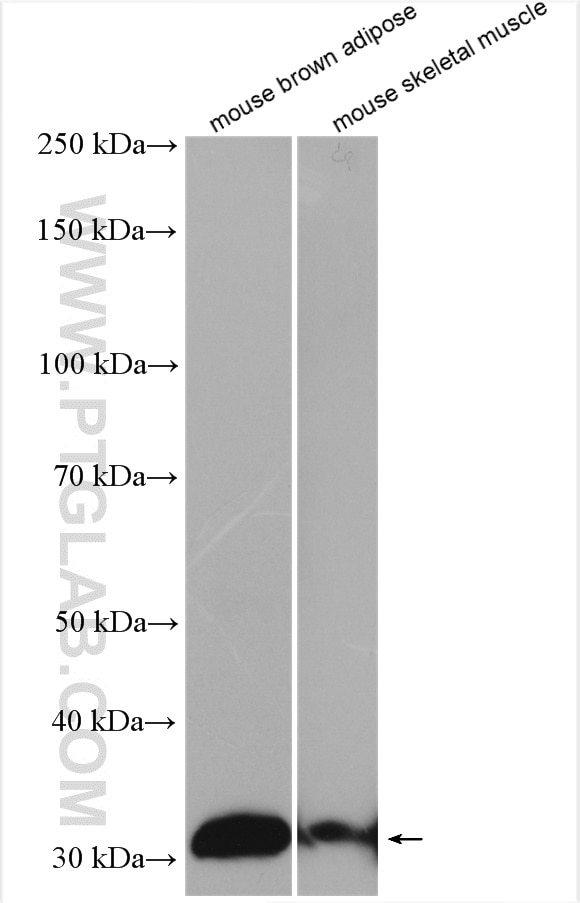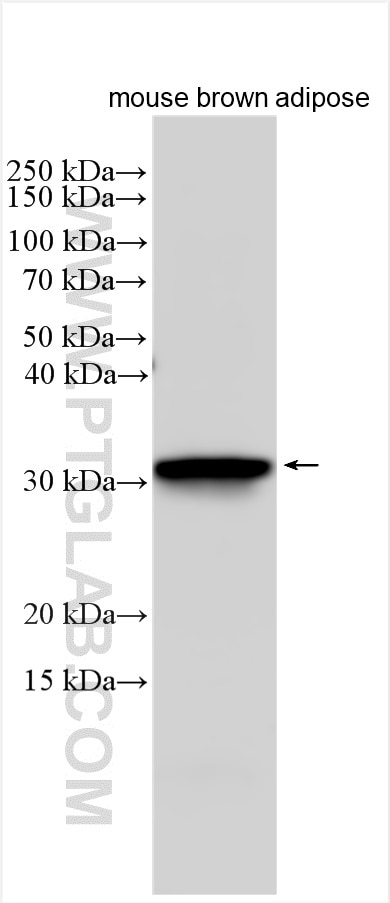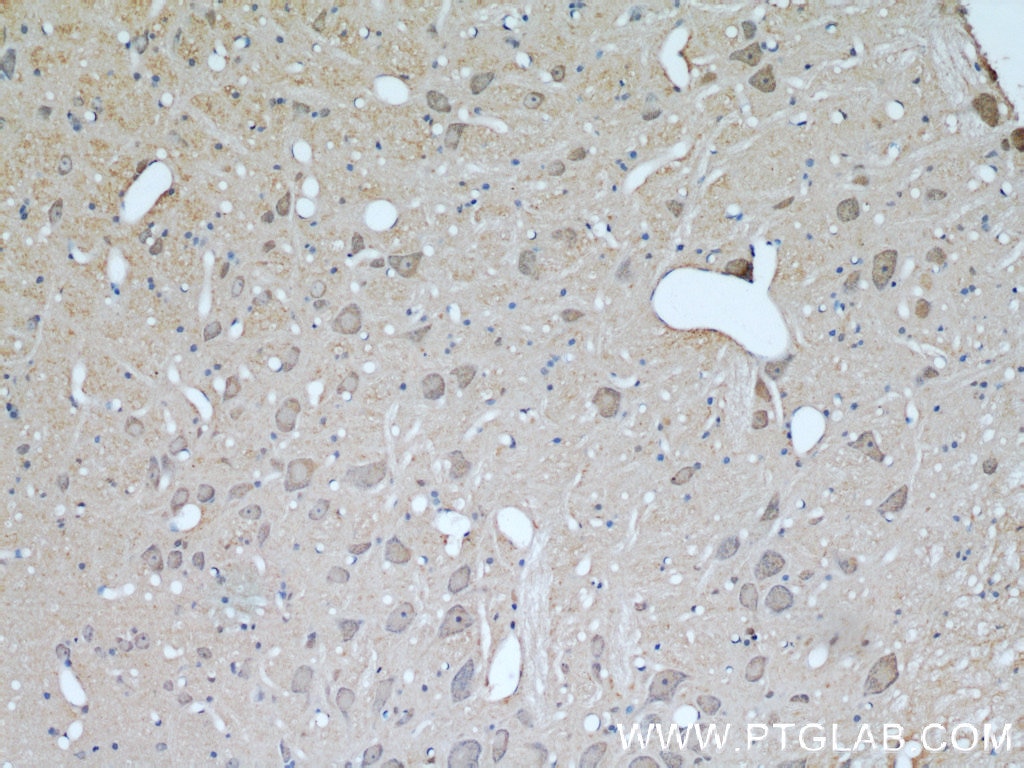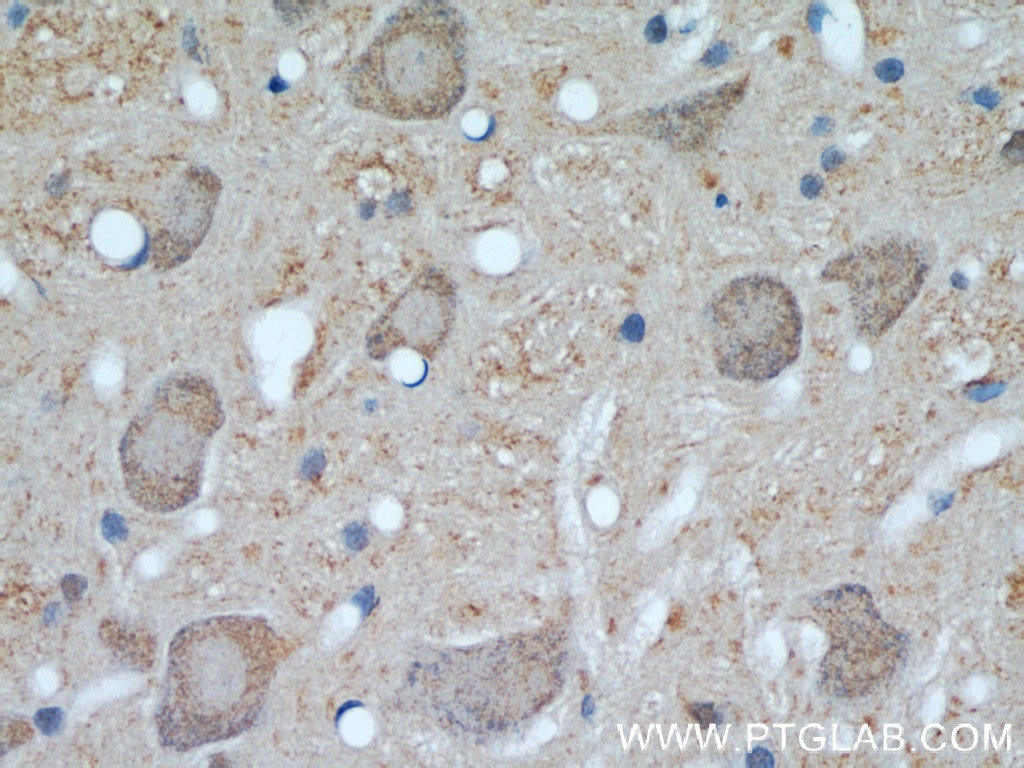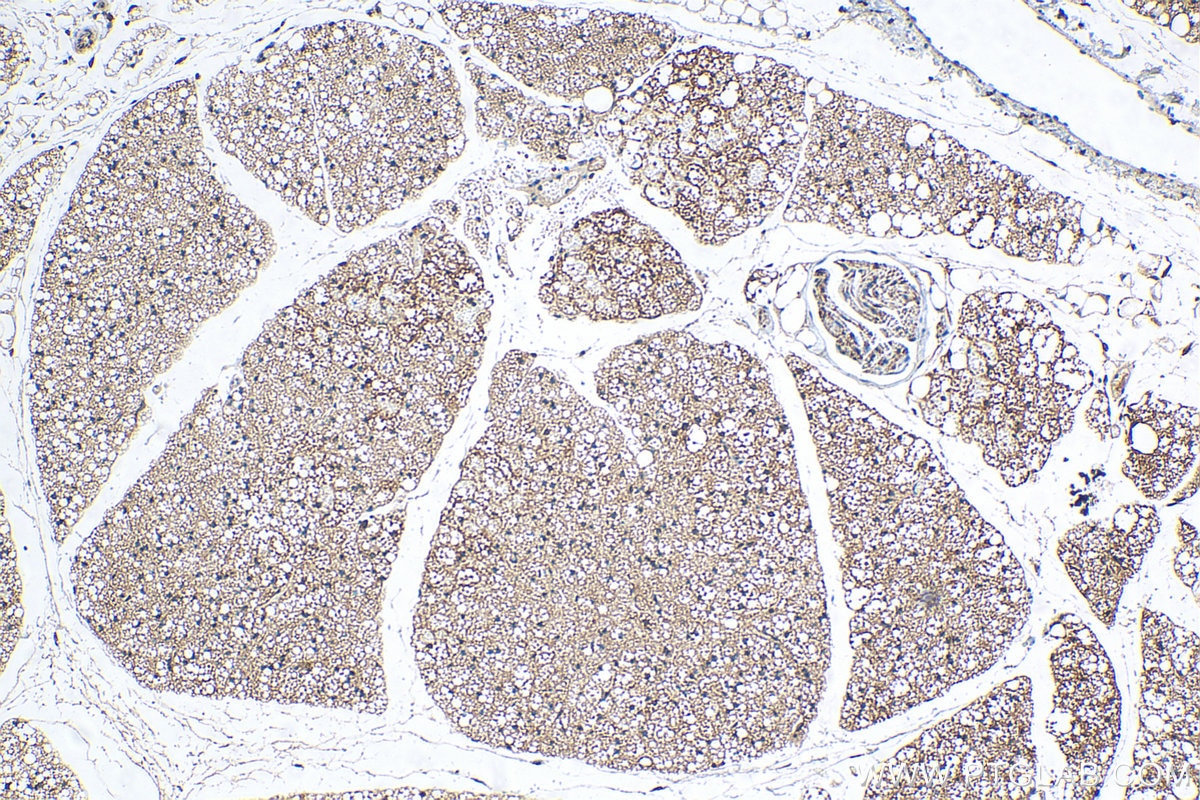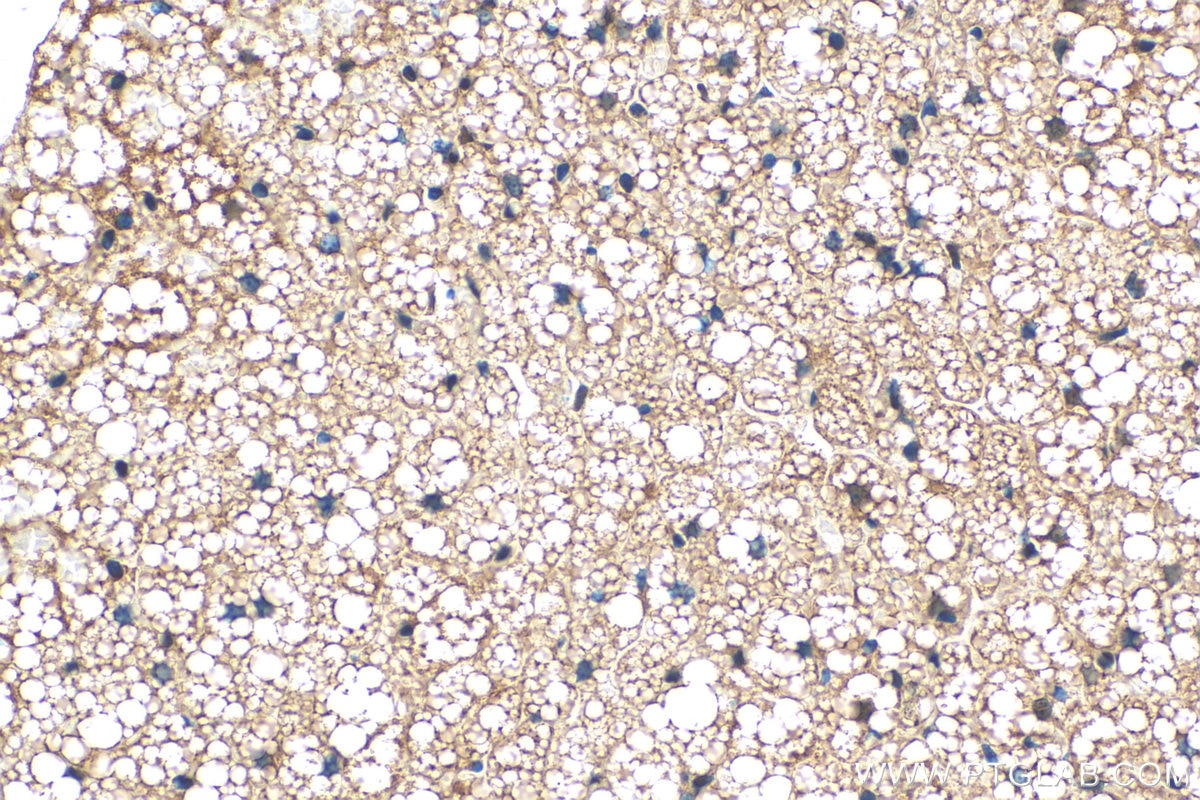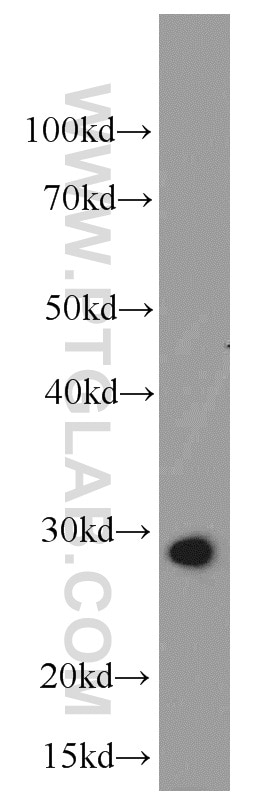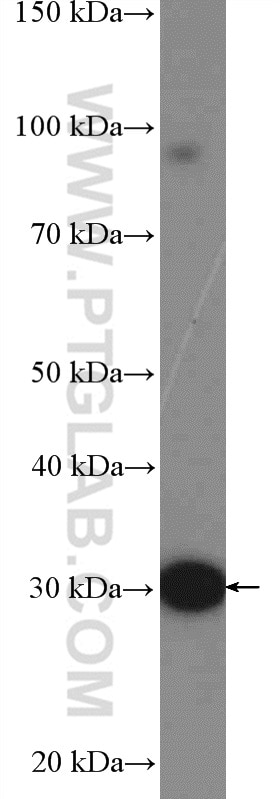- Phare
- Validé par KD/KO
Anticorps Polyclonal de lapin anti-UCP1
UCP1 Polyclonal Antibody for WB, IHC, ELISA
Hôte / Isotype
Lapin / IgG
Réactivité testée
Humain, rat, souris et plus (2)
Applications
WB, IF, IHC, ELISA
Conjugaison
Non conjugué
N° de cat : 23673-1-AP
Synonymes
Galerie de données de validation
Applications testées
| Résultats positifs en WB | tissu adipeux brun de souris, tissu de muscle squelettique de souris |
| Résultats positifs en IHC | tissu adipeux brun de souris, tissu cérébral de rat il est suggéré de démasquer l'antigène avec un tampon de TE buffer pH 9.0; (*) À défaut, 'le démasquage de l'antigène peut être 'effectué avec un tampon citrate pH 6,0. |
Dilution recommandée
| Application | Dilution |
|---|---|
| Western Blot (WB) | WB : 1:1000-1:6000 |
| Immunohistochimie (IHC) | IHC : 1:50-1:500 |
| It is recommended that this reagent should be titrated in each testing system to obtain optimal results. | |
| Sample-dependent, check data in validation data gallery | |
Applications publiées
| KD/KO | See 2 publications below |
| WB | See 80 publications below |
| IHC | See 28 publications below |
| IF | See 8 publications below |
Informations sur le produit
23673-1-AP cible UCP1 dans les applications de WB, IF, IHC, ELISA et montre une réactivité avec des échantillons Humain, rat, souris
| Réactivité | Humain, rat, souris |
| Réactivité citée | rat, Chèvre, Humain, souris, Hamster |
| Hôte / Isotype | Lapin / IgG |
| Clonalité | Polyclonal |
| Type | Anticorps |
| Immunogène | UCP1 Protéine recombinante Ag20388 |
| Nom complet | uncoupling protein 1 (mitochondrial, proton carrier) |
| Masse moléculaire calculée | 307 aa, 33 kDa |
| Poids moléculaire observé | 33 kDa |
| Numéro d’acquisition GenBank | BC098168 |
| Symbole du gène | UCP1 |
| Identification du gène (NCBI) | 7350 |
| Conjugaison | Non conjugué |
| Forme | Liquide |
| Méthode de purification | Purification par affinité contre l'antigène |
| Tampon de stockage | PBS avec azoture de sodium à 0,02 % et glycérol à 50 % pH 7,3 |
| Conditions de stockage | Stocker à -20°C. Stable pendant un an après l'expédition. L'aliquotage n'est pas nécessaire pour le stockage à -20oC Les 20ul contiennent 0,1% de BSA. |
Informations générales
UCP-1 (Mitochondrial uncoupling protein 1), is a mitochondrial transporter protein that creates proton leaks across the inner mitochondrial membrane, thus uncoupling oxidative phosphorylation from ATP synthesis. It has been identified a key molecule for metabolic thermogenesis to avoid an excess of fat accumulation. UCP-1 expression is usually restricted to brown adipose when induced by cold exposure and thyroid hormone.
Protocole
| Product Specific Protocols | |
|---|---|
| WB protocol for UCP1 antibody 23673-1-AP | Download protocol |
| IHC protocol for UCP1 antibody 23673-1-AP | Download protocol |
| Standard Protocols | |
|---|---|
| Click here to view our Standard Protocols |
Publications
| Species | Application | Title |
|---|---|---|
Nature Feeding induces cholesterol biosynthesis via the mTORC1-USP20-HMGCR axis.
| ||
Nat Commun Improvement of obesity-associated disorders by a small-molecule drug targeting mitochondria of adipose tissue macrophages. | ||
Mol Biol Evol Functional Attenuation of UCP1 as the Potential Mechanism for Thickened Blubber Layer in Cetaceans | ||
Diabetes Exosomes From Adipose-Derived Stem Cells Attenuate Adipose Inflammation and Obesity Through Polarizing M2 Macrophages and Beiging in White Adipose Tissues. | ||
JCI Insight Muscle specific ER-associated degradation maintains postnatal muscle hypertrophy and systemic energy metabolism | ||
Avis
The reviews below have been submitted by verified Proteintech customers who received an incentive forproviding their feedback.
FH Mi (Verified Customer) (03-06-2023) | It works well in human brown adipocyte cells. Although we got several non-specific bands, the band at the expected size was very clear.
|
